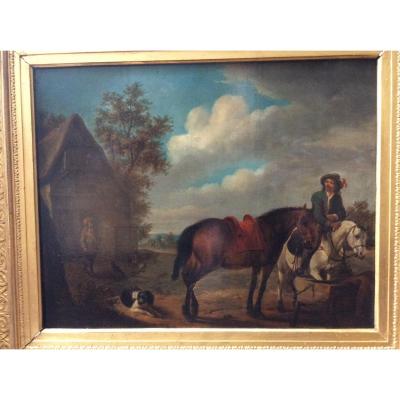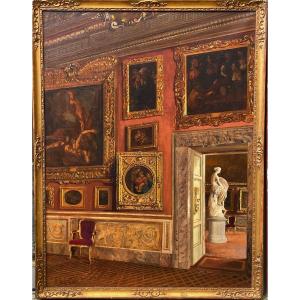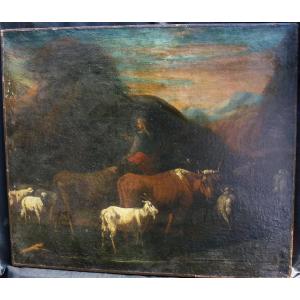This magnificent allegory of astrology, embodied in the form of the muse Urania, is touching in its grace and softness.
The Muse of Astronomy and Astrology
We know the story of Urania from the accounts of ancient poets such as Hesiod. In his poem Theogony, the author recounts the adventures of the gods and their lineages, opening his account with a prologue in praise of the Muses.
Nine in number, they are the fruit of the union between Jupiter and Mnemosyne, a Titanid, daughter of Ouranos and Gaia. These goddesses, who reside on Mount Helicon and enchant gods and mortals with their songs, preside over the liberal arts. Urania, 'the celestial', represents the two complementary sciences of astrology and astronomy.
She is represented as a winged female figure wearing a crown of stars. Able to predict the future thanks to her astral knowledge, she is depicted with measuring instruments that allow her to observe and evaluate the distances between the stars. In her right hand she holds a compass and a Latino radio, used to make telemetric measurements.
In her left hand she supports a globe and holds a piece of parchment on which is drawn a geometric figure, probably a celestial map.
Beside her sits an eagle, To show that astrology, in imitation of this Roy of Birds, who looks fixedly at the sun, is so clear-sighted that in the very darkness it makes for itself lights that penetrate as far as the heavens. These words are borrowed from Cesare Ripa, author of Iconology. In this work, he gives a detailed description of the allegory of astrology to which our painter has chosen to conform (more precisely, to the 1643 edition, illustration p.22).
Urania is resting on a cloud and her gaze is turned towards the sky, which she is contemplating. A soft orange light appears on the horizon, indicating that the night sky is slowly giving way to dawn, which will interrupt our muse's contemplation.
Although astrology is now relegated to the status of a pseudo-science, it has been an object of fascination in many civilisations since ancient times. It has been linked to the practice of sciences such as astronomy, medicine and politics. Studied at all times by the most eminent scientists and celebrated by artists, novelists and poets, the figure enjoyed great popularity in the arts until the 18th century.
The octagonal format of the painting suggests that it was probably intended as part of the panelled decoration of a private house or palace.
Provenance:
Sotheby's sale, Paris, 23rd June 2011
Galerie Alexis Bordes, Paris
Private collection
Sold in its painted wooden frame


























 Le Magazine de PROANTIC
Le Magazine de PROANTIC TRÉSORS Magazine
TRÉSORS Magazine Rivista Artiquariato
Rivista Artiquariato